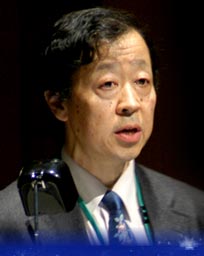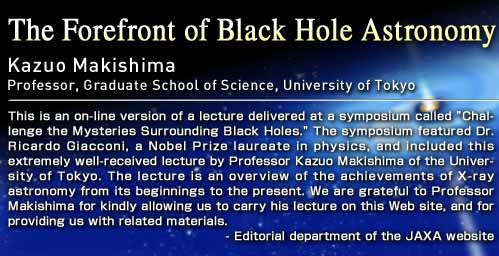Dr. Kazuo Makishima
Professor, Graduate School of Science, University of Tokyo
Chief Scientist, Cosmic Radiation Laboratory of the Institute of Physical and Chemical Research (joint appointment)
Born in 1949
Doctor of Science (University of Tokyo)
Specialty: astrophysics (X-ray astronomy)
Dr. Makishima studies high-energy physical phenomena from the sun to the end of the universe by using X-rays, gamma rays and corpuscular rays as means of observation.

The idea of the black hole first appeared in history in 1905, just one century ago, when Albert Einstein proposed the general theory of relativity. The core of the theory lies in Einstein's equations. The term "equation" reminds us of quadratic equations, such as ax2+bx+c=0, which we learned in junior high school. Although Einstein's equations are much more complicated, it is convenient to compare the two, since they are essentially the same.
There were a lot of people who tried to solve Einstein's equations, and around 1910, Karl Schwarzschild, a German astronomer who was blessed with mathematical abilities, succeeded in obtaining one solution to them. Schwarzschild asked what would happen to gravity surrounding heavy objects when they became extremely small and almost concentrated. His solution suggested the concept of a black hole.
At the time, everyone thought this was probably just an imaginary concept based on a mathematical formula. Yet around 1938, with the gradual development of theories about the evolution of stars, scientists such as J. Robert Oppenheimer began to argue that a phenomenon like the one suggested by Schwarzschild could occur when a heavy star came to an end. In 1969, John Wheeler first used the term "black hole" to describe this phenomenon.
|



